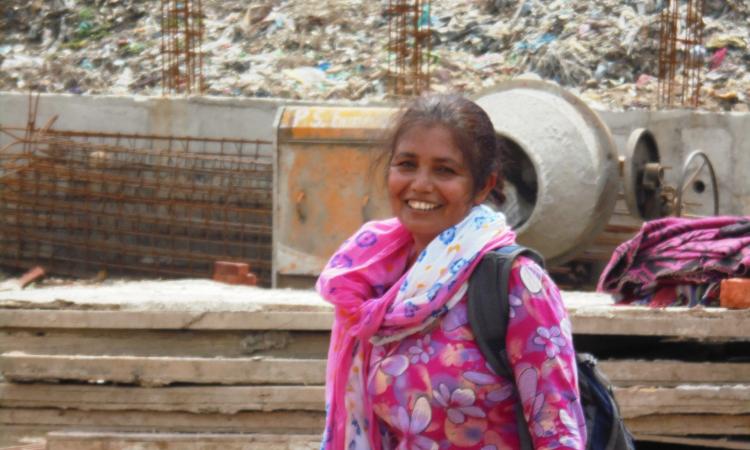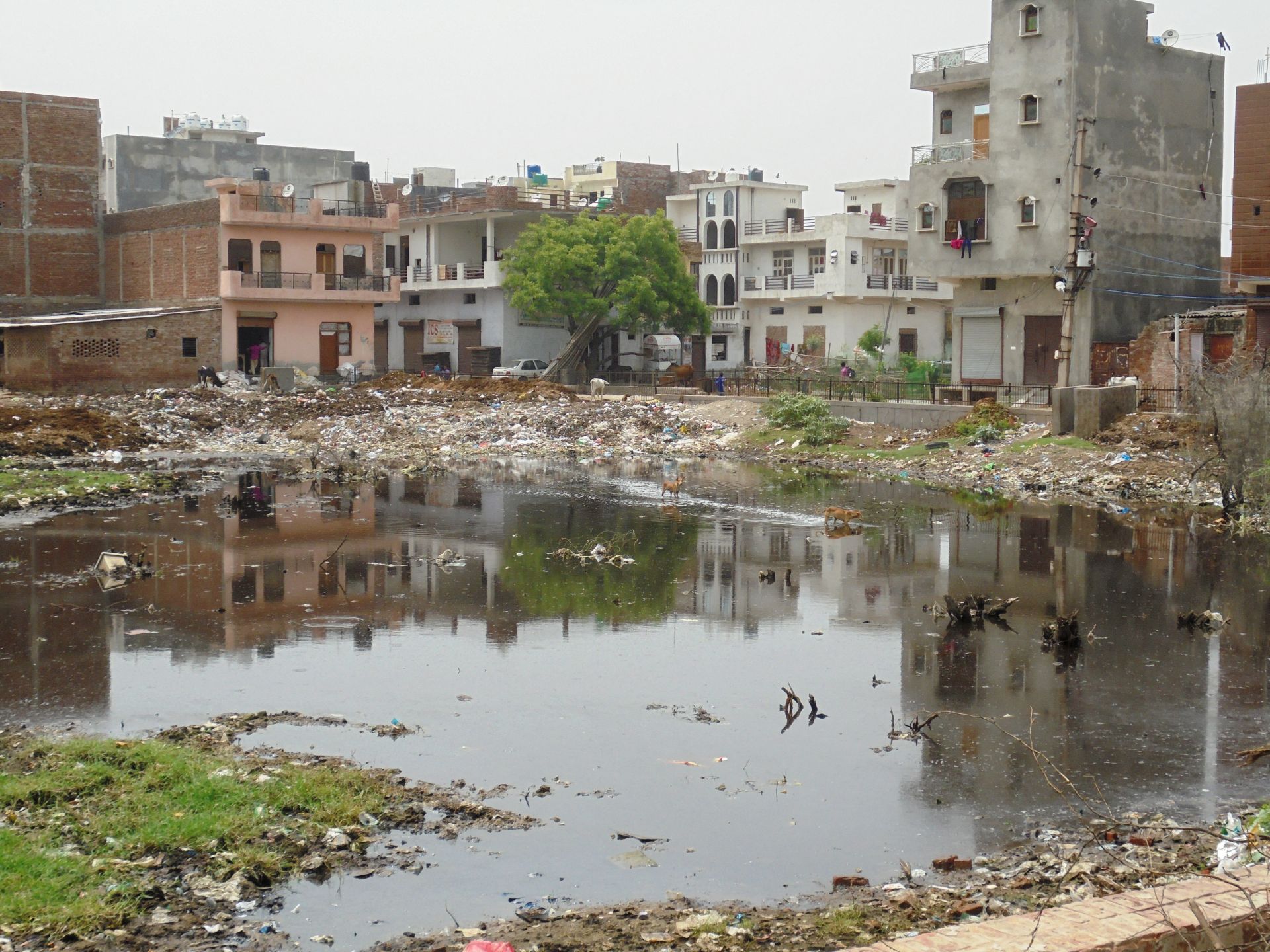
With more than 8360 tons of trash created daily in Delhi, the city has three trash pile sites at Bhalaswa, Ghazipur and Okhla. In these sites technically known as landfills, garbage is buried between layers of earth to build up low-lying lands. Now, Delhi’s landfills have grown beyond big; they were once outside the city but as the city expanded, the piles rose higher and became wider within it.
Bhalaswa, an open uncontrolled dump
The Bhalaswa landfill commissioned in 1994 in north western Delhi, was supposed to be closed in 2010 when it reached about 22m in height and had about 8 million tonnes of accumulated waste. It has now grown higher than 41m and is still going strong. This go-to-repository which is more than 21 acres in area receives about 2,200 tonnes of waste per day. Bulldozers keep levelling the garbage while trucks continuously dump waste. Of this, about 700 tonnes per day goes to the compost plant near the site.
Attempts are underway to create ‘energy out of waste’ by tapping the landfill gases to be sold to businesses and municipalities. These alternative waste treatment processes, recognized as toxic activities as per the Kyoto Protocol, are being pushed through under the pretext of ‘reducing’ methane emissions.
A park out of garbage
It’s been five years since the Commonwealth Games when the covering of the Bhalaswa landfill was to be undertaken. All those years of garbage was to be covered up and the garbage mountain was to be turned into a park. In fact, there is this small stretch facing the National Highway which has been ‘beautified’. This however, masks a larger issue, according to Pushpa of Lok Shakti Manch a civil society group active in the area. “The landfill is adjacent to the Bhalaswa resettlement colony where displacees from eleven jhuggi-jhopri (slum) clusters were resettled in 2002 under the pretext of beautification of the city. As with most resettlement colonies, their living environment was anything but good. The people were told that the landfill will one day be a park but all of that garbage with its foul smell stays put over there”, says Pushpa.
Poorly managed dump

The landfill is publicly owned and managed by the Municipal Corporation of Delhi, which could not figure out where the new trash would go. Hence, they could not add the final cap on the Bhalaswa landfill. Also, the landfill is not scientifically lined as the pit is only used as a dump site as per the Delhi Government’s admission. None of the landfill sites are designed as per the schedule 3 of the Municipal Solid Waste Rules, the Delhi Government website notes.
"The Bhalaswa landfill is covered with no more than a layer of malba (coarse aggregates) topped with soil when it ideally should have had a layer of plastic or a special type of clay layer required for a secure landfill", notes Alekh, a law student of Delhi University studying entitlements issue in the area. He adds, "Even if the landfill stops receiving new trash--which is unlikely in the short run--the old waste will still stay".
Hazard Centre's study
A study by Hazard Centre, a Delhi based NGO and Bhalaswa Lok Shakti Manch, indicate high levels of Total Dissolved Solids (TDS) way above the maximum permissible limit (BIS) from the hand pumps located in the vicinity of the landfill. They also show faecal contamination and heavy metal contaminants such as lead and zinc. The study notes that “about 79% of the residents suffer from a number of illnesses, especially gastro‐intestinal diseases, musculoskeletal pain, skin and eye irritation, and respiratory problems”.

There is no regular provisioning of clean drinking water in the colony and the number of public stand posts for drinking water is inadequate. Residents have succeeded after lot of struggle in bringing tanker water supply to the area. Yet, due to the lack of piped water supply, people are often forced to drink groundwater, which is unfit for human consumption.
Leachates from groundwater are a threat to human health
Pushpa notes, “The Delhi Urban Shelter Improvement Board (DUSIB) has turned a blind eye to the risks to human health from the Bhalaswa landfill from where leachates contaminate the groundwater. The landfill adjoins the Bhalaswa Lake, a fresh water oxbow lake, which too is getting contaminated".
Apart from the leachates, unhealthy large portions of waste are strewn in the streets in the Bhalaswa resettlement colony, which pose a threat to public health. “Many of the residents sift through these urban dumps to earn their living in severely dirty, often dangerous conditions”, says Raghu, the neighborhood kabadiwala (waste collector).
Pushpa has her reservations about the work being done by civic agencies, the multiplicity of agencies itself being a problem. With Delhi projected to generate 17,000-25,000 tonnes/day of municipal solid waste by 2021, it remains to be seen how gigantic mounds of landfill will eventually be turned into something else while also sealing the trash in. Until then, despite new technologies, it will continue to be a rotten deal for the resettlement colony unless the civic agencies chip in.